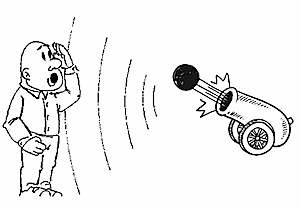Instruments that take sophisticated and precise measurements of sound are taken for granted today. However, there were certain developments that set the stage for what we currently use, and application and control of sound rest solidly on measurements. Reviewing these early, but significant measurement developments is the purpose of this two-part series.
Could Sound be Quantified?
Until the 17th century, sound was considered so ephemeral (short time, temporary) that philosophers thought it impossible to quantify. Because sound dies away so quickly, philosophers despaired of ever being able to capture it and subject it to some form of ruler.
Aristotle (384-322 B.C.) reasoned that high pitches traveled faster than low pitches, but his influence was so great that this was not challenged for more than 2,000 years even though the means to disprove this were available. However, it was considered anathema to question the great Greek philosopher.
Calculus and Newton
Calculus, which was invented during the latter part of the 17th century, permitted the study of sound propagation, and Isaac Newton (1642-1727) predicted the speed of sound from the density and elasticity of air. Although calculus allowed for many additional predictions of sound behavior, there were no experimental results to test them against, and, as a result, it was as if predictions were being held in a vacuum.
L’Acoustique
This French study, translated into English as “acoustics,” described the experiments that were starting to be conducted. It was first published in 1701 by Joseph Sauveur (1653-1716). The term found its way into other languages because the natural philosophers (or scientists, as we call them today) needed a word to describe the experiments they were initiating.
The Speed of Sound
From the earliest days, it has been assumed that humans knew that sound traveled more slowly than light. This difference was demonstrated repeatedly during storms, when the thunder (violent expansion of air caused by lightening)  followed a flash of lightening.
followed a flash of lightening.
The first actual measurements were made by Pierre Gassendi (1592-1655) and Marin Mersènne (1588-1648), using common elements at the time – gunpowder, cannons, and muskets. Mersènne used a pendulum to measure the time between the flash of exploding gunpowder and the arrival of the sound. Gassendi used a mechanical timepiece to make the measurement, but it was he who also discovered that the high-pitched crack of the musket and the boom of a cannon arrived at the same time (debunking Aristotle’s belief). This showed that all pitches travel at the same speed.
Newton, using mathematics, predicted the speed of sound, and wrote about it in his 1687 book Principia Mathematica. Two of Newton’s friends, John Flamsteed (1646-1719), the Astronomer Royal and Edmond Halley (1656-1742), the comet discoverer, measured the speed of sound to confirm Newton’s success in making this calculation. What they found, as they watched a cannon fired three miles from them, was that Newton’s prediction was 20% too slow. Their repeated attempts to get the measurement to agree with theory led to their estrangement from Newton in later years.
However, in 1738, the Academy of Sciences in Paris measured and published a speed of sound within 0.5% of the value accepted today. Subsequently, the French would lead the field in measurements of the speed of sound in solids.
Next week’s post will complete this presentation on the origin of acoustic measurements. It will focus on frequency, phase, and amplitude.








